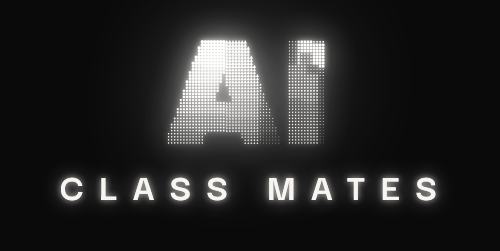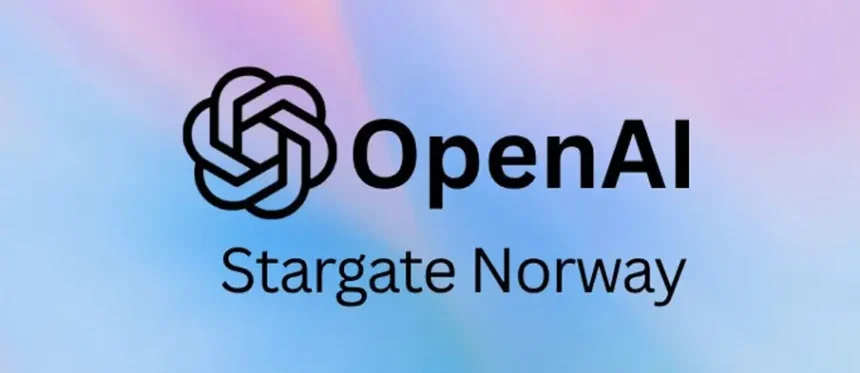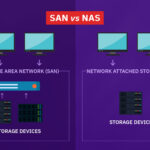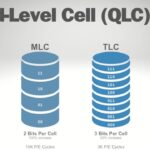When discussions about artificial intelligence in Europe come up, the focus often turns to regulation, innovation hubs, and the balance between technological growth and sustainability. But in mid-2025, a bold new chapter began with Open AI’s announcement of Stargate Norway, a project that promises to become the EU’s first true AI gigafactory.
Set in Kvandal near Narvik, in the heart of Northern Norway, this facility is more than a data center; it represents a strategic shift in how Europe approaches AI sovereignty, renewable-powered computing, and large-scale digital infrastructure.
In this long-form exploration, we will examine what Stargate Norway really means for the EU, why its partnership with Nscale and Aker matters, and how individuals, businesses, and policymakers can benefit from this transformation.
Along the way, we will connect the dots between global AI competition and Europe’s desire for digital sovereignty, showing that this gigafactory is not just a technological investment but a political and cultural statement.
The Vision Behind Stargate Norway
At its core, Stargate Norway is an ambitious initiative that places AI compute power at the center of Europe’s future. Open AI, together with Nscale Global Holdings and Aker ASA, has committed to building a massive GPU-powered facility that can meet the surging demand for training and deploying advanced models.
Reports from Reuters highlight that the first phase alone involves an equity investment of around one billion dollars, with capacity to scale further in the coming years.
What distinguishes this project from other data centers is its deliberate alignment with EU goals on sustainability, compliance, and sovereignty. According to ITPro, by 2026 the facility will house over 100,000 NVIDIA GPUs.
These processors will deliver unprecedented capacity for developers and researchers across Europe, offering an alternative to relying solely on infrastructure in the United States or Asia.
Even more importantly, the project has been designed with sustainability at its core. Norway’s vast hydropower resources and naturally cool climate create the perfect ecosystem for energy-intensive computing.
Unlike many global facilities that depend on coal or gas, Stargate will run on renewable hydropower and employ cutting-edge liquid cooling systems that reduce waste.
The excess heat generated by GPUs will not be discarded but redirected to support low-carbon businesses, showcasing how advanced technology can be seamlessly integrated into a circular economy.
Why Stargate Norway Matters for the EU
To understand the significance of Stargate Norway, it is important to see it within the broader EU narrative of AI sovereignty. Europe has often been described as a “regulator” rather than a “builder” in the digital economy.
With frameworks like the AI Act and GDPR, the EU has emphasized governance, but critics argue that it risks falling behind the United States and China in the race for innovation.
Projects like Stargate Norway flip that script. They give Europe not only rules but also resources.
The WSJ reports that Stargate will become the largest AI data center in Europe, designed specifically to support large-scale model training.
That means European companies, universities, and research labs will be able to access world-class computing power without being constrained by international bottlenecks or transatlantic data flows.
For policymakers, this signals progress toward digital sovereignty the ability to shape AI development on European terms while keeping data within EU borders.
Beyond sovereignty, sustainability is another pillar. The facility sets a new standard for how green computing should look. By running entirely on hydropower and recycling heat into surrounding communities, it integrates environmental considerations that align with Europe’s climate commitments.
In doing so, it shows that AI and sustainability do not need to be opposing goals but can work hand in hand.
The regional benefits are equally striking. Narvik, once primarily known for shipping and mining, is now poised to become a European hub of innovation. The project will create new jobs, draw investments, and strengthen ties between tech companies and Scandinavian universities.
For young people in Norway and across the EU, Stargate represents an opportunity to engage in next-generation industries without leaving the continent.
The Technical Backbone of the Gigafactory
The heart of Stargate Norway is not its location or its symbolism, but its technical design. According to TechRadar, the data center will launch with 230 megawatts of capacity, expandable to 520 MW. This level of scalability is what earns it the “gigafactory” label.
Cooling is one of the biggest challenges for AI workloads, and this is where Stargate Norway innovates. Instead of traditional air-based cooling, it will use closed-loop, direct-to-chip liquid cooling systems, which increase efficiency and drastically reduce environmental impact.
These systems allow GPUs to operate at maximum performance without overheating, all while minimizing water consumption.
The GPUs themselves are the stars of the show. With 100,000 NVIDIA units, the facility can support some of the most complex model training projects in the world.
From large-scale natural language models to climate simulations and biotech research, the applications are limitless. For European researchers who previously struggled to access such compute power, Stargate represents not just an infrastructure upgrade but an entirely new horizon of possibility.
What This Means for Developers and Researchers
If you are a developer or researcher in the EU, Stargate Norway could soon influence your daily workflow. For years, many in Europe have been constrained by limited compute resources, forcing them to either scale down projects or rent expensive capacity abroad. Stargate’s deployment will change that dynamic.
Imagine training a sophisticated AI model for medical research. Instead of competing with global queues or dealing with transatlantic latency, you could access local infrastructure optimized for high-performance computing. The results would be faster, more affordable, and compliant with EU data protection rules.
That opens the door for breakthroughs not only in technology but also in health, education, and environmental sciences.
From a practical standpoint, researchers can begin preparing now. Projects should be designed with scalability in mind, anticipating the availability of large GPU clusters.
Universities and labs can explore partnerships with Nscale or Open AI to ensure early access. More importantly, aligning projects with sustainability goals will resonate with funding agencies, making it easier to secure grants and investment.
The Startup and Business Angle
Startups are another group that stand to gain significantly. In Europe, young AI companies often face two challenges: limited compute power and investor skepticism about scalability. Stargate Norway addresses both.
By offering access to one of the world’s largest AI infrastructures, it allows startups to prove concepts that previously seemed out of reach.
At the same time, the facility’s strong sustainability profile makes it easier to pitch to climate-conscious investors who are increasingly demanding green credentials from the companies they support.
Practical advice for entrepreneurs is simple: start integrating sustainability into your business model now. If your startup can demonstrate that it plans to leverage renewable-powered compute for training or deployment, you have a stronger story to tell both investors and customers.
Additionally, keep an eye on regional innovation networks in Scandinavia. Many accelerator programs will likely form around the Stargate ecosystem, offering early-stage companies opportunities to plug into its infrastructure.
A Policy Perspective
For policymakers across the EU, Stargate Norway offers both opportunities and responsibilities. On one hand, it represents proof that Europe can build world-class infrastructure while staying true to its values of sovereignty and sustainability. On the other hand, it raises questions about governance, access, and inclusivity.
Policymakers should focus on ensuring that the benefits of Stargate are distributed across member states, not concentrated in a few elite institutions. They should also encourage partnerships between industry and academia, making sure that students and researchers have pathways to engage with this infrastructure.
Equally important is preparing the workforce. AI data centers create demand not only for engineers but also for electricians, cooling specialists, and renewable energy experts.
By funding vocational training programs, governments can ensure that the job creation potential of Stargate is fully realized.
The Cultural and Environmental Dimension
Beyond economics and policy, Stargate Norway also carries symbolic weight. It shows that AI does not need to be seen as a purely extractive industry one that drains energy and centralizes power in Silicon Valley. Instead, it can be harnessed as a European project rooted in green values, regional development, and collective progress.
Environmentally, Stargate offers an important counterpoint to critics who argue that AI is inherently unsustainable. The combination of hydropower, liquid cooling, and heat reuse demonstrates that energy-intensive technologies can be reconciled with climate goals. If successful, Stargate may serve as a blueprint for similar projects across Europe, from Finland to Portugal.
Practical Steps for Individuals
It is easy to think of Stargate Norway as a project reserved for corporations and governments, but individuals can also prepare to benefit.
Developers should keep an eye on Open AI announcements to know when capacity becomes available. Students can start aligning their research interests with fields that require high-performance computing, such as machine learning, biotech, or climate modeling.
Educators can integrate these opportunities into curricula, teaching students how large-scale compute resources open new research pathways.
Even if you are not directly involved in technology, you can still participate in the broader ecosystem. Community groups can track how Stargate’s waste heat is being reused to support local businesses.
Environmental advocates can highlight the project as a positive example of sustainable AI, building momentum for more responsible data centers elsewhere.
Final Reflections
Stargate Norway is not just another data center it is a statement. For the EU, it signals that the continent is ready to take control of its digital future, balancing AI innovation with sustainability and sovereignty.
For Open AI, it shows commitment to expanding beyond U.S. borders and embedding itself in the European project. For Norway and the Narvik region, it is a once-in-a-generation chance to transform into a hub of global technological importance.
The implications are vast. Developers will gain new tools, startups will have fresh opportunities, policymakers will have stronger narratives for digital sovereignty, and citizens will see firsthand how high-tech projects can be reconciled with environmental stewardship.
Stargate Norway embodies the belief that the EU can lead in AI not only by regulating it but also by building it on its own soil, with its own values, and for the benefit of its own people.








